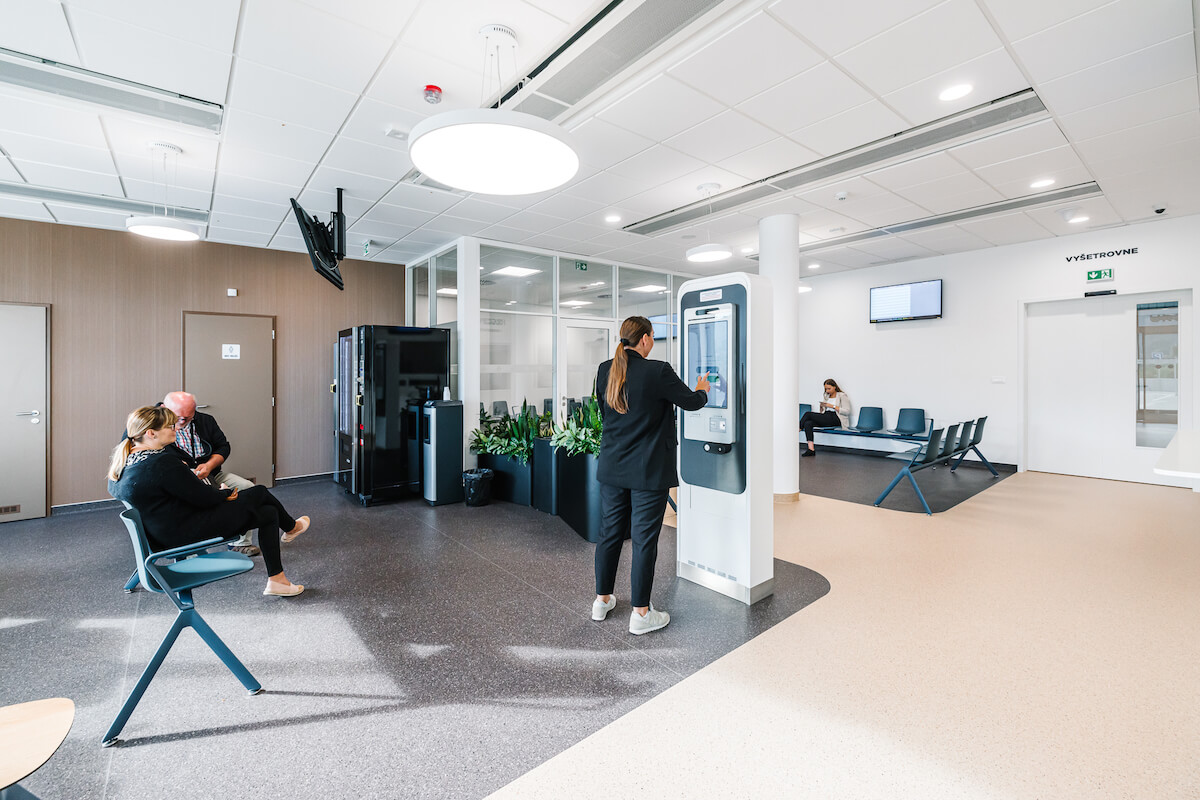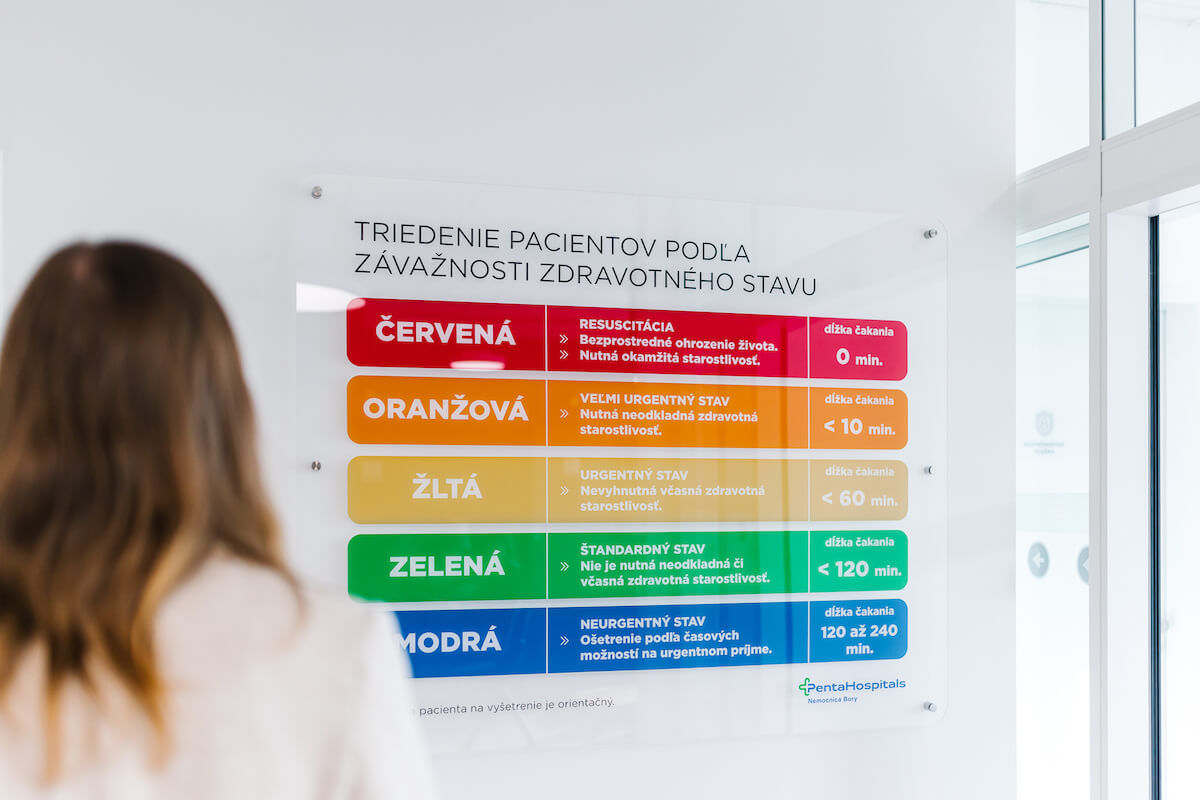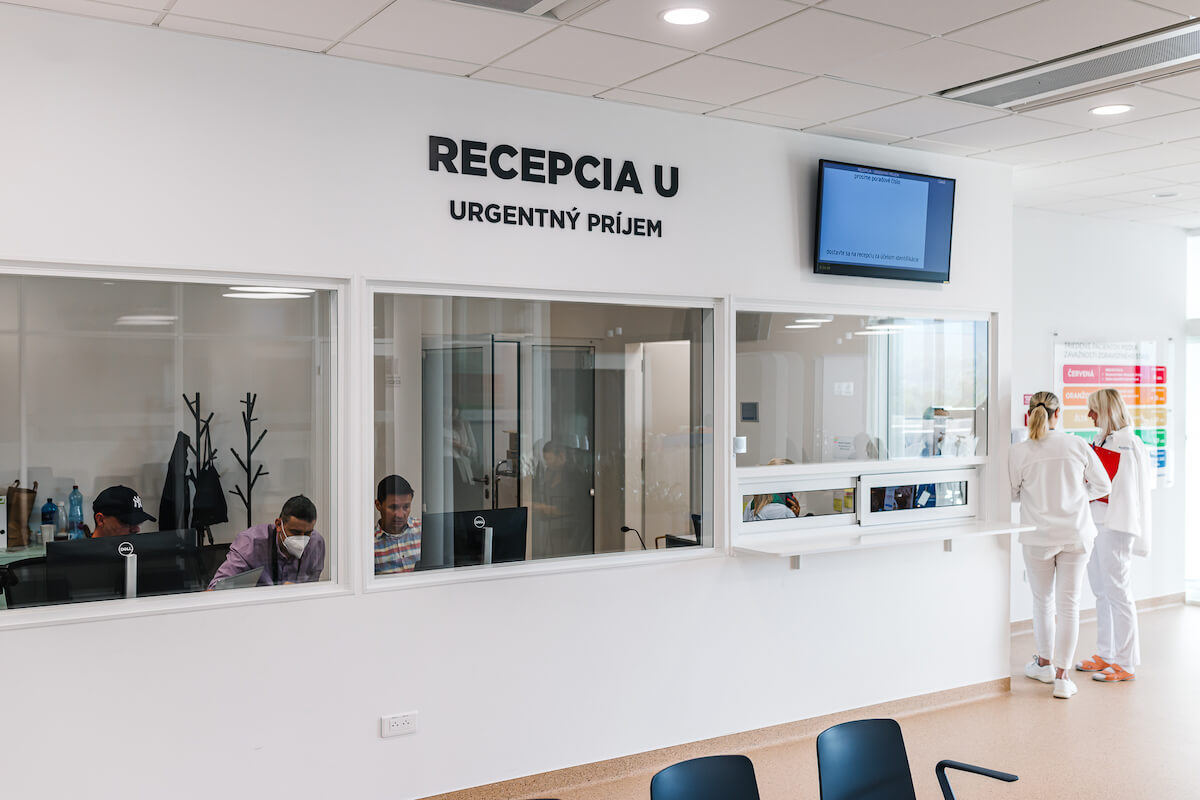Emergency Admission is the "Gateway" to the Hospital
The Emergency Department at Bory Hospital provides specialized and regional care to acute patients from Bratislava and the surrounding areas, such as Záhorie. The department is equipped with state-of-the-art technical and medical equipment that meets strict international standards. It also features a waiting area with a designated space for a nurse. Patient treatment is prioritized based on a modern triage system.
Emergency Operations
The role of the Institutional Emergency Service (ÚPS) is to ensure the continuous availability of urgent medical care for patients who experience sudden changes in their health status or life-threatening situations within the central intake at Bory Hospital.
- High-Threshold Area: Designed for emergency medical service vehicles (ambulances)
- Low-Threshold Area: Emergency care for the general public
Note: Bory Hospital will provide emergency care only for adult patients.
Emergency Operating Hours
Urgentný príjem je The Emergency Department is open 24/7, meaning continuously throughout the workweek, weekends, and public holidays.

Available Facilities for Emergency Admission
- 2 high-threshold "crash rooms" for providing multidisciplinary urgent care to patients with failing vital functions
- 18 observation beds and chairs, including an isolation unit
- More than 10 examination rooms
- Triage center and a structured waiting area system
- State-of-the-art monitoring equipment
- Extensive Point-of-Care diagnostic resources with a special focus on the use of Point-of-Care ultrasound, including transesophageal echocardiography
- Readily accessible radiology services
- Protocolized healthcare organization and close collaboration with other hospital departments
HIGH-TRESHOLD ENTRANCE
This entrance is for severe, life-threatening conditions brought in by Emergency Medical Services (EMS) or Rapid Medical Assistance (RLP). The coverage area includes the district of Malacky, Záhorská Bystrica, Devínska Nová Ves, and Bratislava Lamač.
For patients with failing vital functions, there are two modern resuscitation rooms, known as "crash rooms," available for providing multidisciplinary emergency care. These rooms are equipped similarly to operating theaters, including an operating table and surgical lights. Due to short transfer routes, the staff can quickly move patients to diagnostic facilities or operating rooms.
Patients transported by Air Ambulance Services are also swiftly transferred to diagnostic facilities or operating rooms due to the short transfer routes.
PUBLIC EMERGENCY SERVICE
Low-Threshold Entrance - Emergency Services for the Public
This entrance is intended for the general public, specifically for patients in acute conditions who require examination, treatment, or admission to the hospital. A doctor will examine the patient and determine the next steps based on the severity of the illness.
There are 10 examination rooms and 18 observation beds and chairs, including an isolation unit. The facility also includes extensive monitoring equipment and Point-of-Care diagnostic resources, with a special focus on the use of Point-of-Care ultrasound, transesophageal echocardiography, and readily available radiology services.
The observation beds are used to establish a diagnosis and determine further treatment steps for patients with stabilized vital functions, which may require more time. This includes patients whose condition necessitates, for example, intravenous therapy, consultations with specialists, imaging, or other longer-duration examinations.

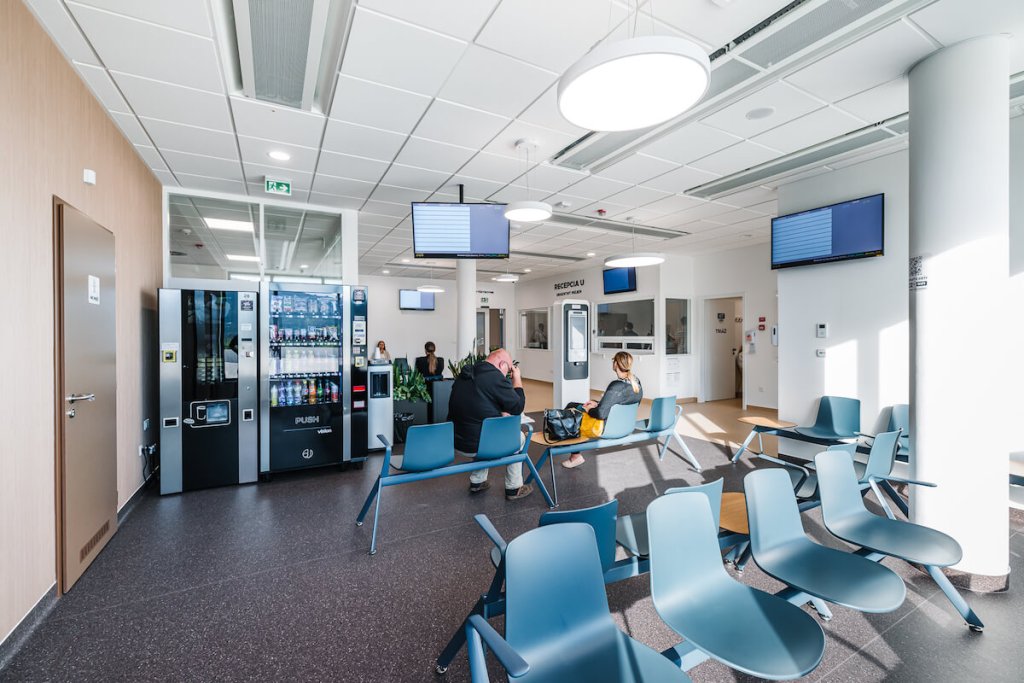
Procedure for Patients Upon Arrival Through the Low-Threshold Emergency Section
- Upon arrival at the emergency reception, the patient will be identified, and if necessary, registered and given an identification bracelet with a code specific to the emergency department.
- The patient will then be called through the queue system for triage and assigned to a triage category based on the severity of their symptoms (levels 1–5).
- In the waiting area, the patient monitors their queue number.
- The patient will be called into the examination room according to the triage category in the following order: red, orange, yellow, green, blue.
EMERGENCY DEPARTMENT TRIAGE
The order of patient care in the emergency department is based on a modern triage system. The triage nurse categorizes patients into five groups based on the urgency of their medical condition. The most severe cases are addressed immediately by healthcare professionals. This approach and method of patient categorization are designed to significantly improve the chances of survival and overall recovery for patients with severe injuries and illnesses.
Waiting Time for Patients in the Emergency Department
The waiting time for definitive treatment depends not only on the patient’s acute condition but also on the current occupancy and workload of the emergency department.
The different color groups vary not only in urgency but also in the preliminary time for treatment. Red and orange groups indicate the highest priority—life-threatening situations requiring immediate examination—while other color groups signify that the life is not in immediate danger, and therefore, the patient will be called for treatment as soon as possible.
We ask for your patience while waiting. However, we want to assure you that throughout the waiting period, the triage nurse will continuously check and monitor patients to promptly detect any changes in their condition.
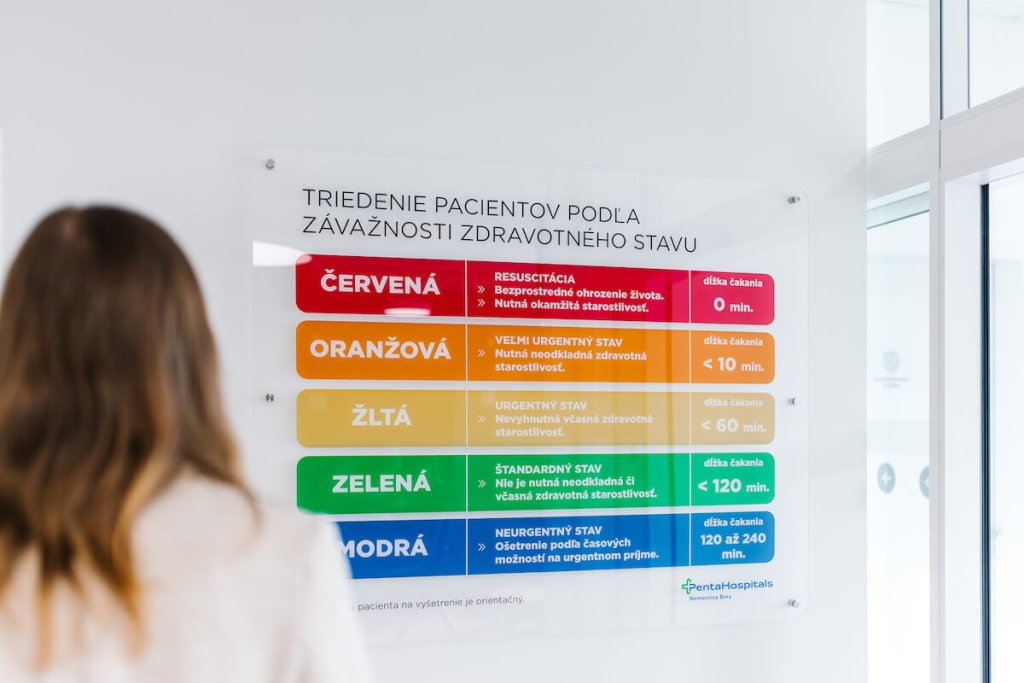
FAQ
When should I go to the emergency department?
The institutional emergency service includes healthcare provided in the following situations:
- Sudden changes in health that pose an immediate threat to life or any basic life functions (consciousness, breathing, circulation). In cases where, without prompt medical care, the health of the person could be seriously endangered, cause them sudden and unbearable pain, or lead to sudden changes in behavior that may immediately endanger themselves or others.
- Injuries immediately after they occur
- Collapse conditions
- Acute painful conditions
- Examination of a person identified as a possible source of a rapidly spreading and life-threatening infection, diagnosis, and treatment of a person with a rapidly spreading and life-threatening infection.
The institutional emergency service does not cover:
- Common illnesses – colds, fevers, viral infections
- Common illnesses or problems lasting several days that fall under the care of general practitioners.
Who will be treated at the emergency department of Bory Hospital?
At the emergency department, we will treat all adult patients who require urgent medical care.
What are the operating hours of the emergency department?
The emergency department at Bory Hospital is open 24/7 during weekdays, weekends, and public holidays.
How do I get to the emergency room in person?
If you wish to use the low-threshold entrance, i.e., the public emergency entrance, the entry to the emergency department is at the back of the hospital. The entrance is marked with a sign "Emergency Department," and there is a parking area reserved for acute patients, limited by a barrier.
What should I bring to the emergency department?
It is advisable for the patient to bring the following when arriving at the emergency department:
- Health insurance card
- List of medications they are taking
- Contact information for a family member
Is there a fee for treatment in the emergency department?
For healthcare services provided within the framework of the urgent care service, the patient's fee is €10.
If the patient was referred to the urgent care provider immediately after receiving outpatient emergency services, the patient's fee is €2.
Exemptions from fees for healthcare services:
- Patients with injuries immediately after their occurrence; this does not apply if the injury was demonstrably caused by the consumption of alcohol, other addictive substances, or medication taken in a manner not recommended by a physician.
- If the provision of healthcare services at the ED lasted more than 2 hours (waiting time before receiving healthcare is not included in this duration).
- If the patient was subsequently admitted (hospitalized) for inpatient care.
- If the patient holds at least a gold Jánskeho plaque.
- If the provision of healthcare services is related to pregnancy.
Acute childbirth
In the case of an acute condition of the mother, identification and rapid triage will be conducted upon arrival at the emergency department. The mother will then be transported by ambulance to the maternity ward. At the maternity clinic, she will be examined, and the doctor will decide on hospitalization.
Mothers arriving at the hospital via the emergency department will first undergo standard examinations. Based on these, the healthcare personnel will assess the stage of labor. According to the law, the hospital must admit a mother in the active phase of labor and she may proceed with childbirth.
However, we would like to ask all future mothers to take a responsible approach regarding the health of both their baby and themselves, and to seek this option for childbirth only in urgent cases.
Parking at the Emergency Department
In front of the Emergency Department, there is a parking lot accessible via a barrier. Parking fees apply, and the payment instructions are clearly displayed near the barrier. Please ensure to follow these guidelines for a smooth parking experience.





